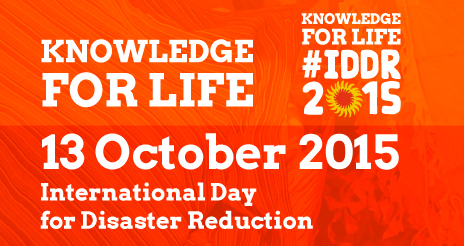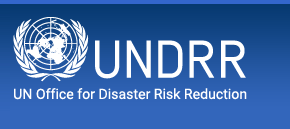- Our Mandate
- Mission and Objectives
- UNDRR in the UN
- Work Programme & Annual Reports
- Results Based System
- Work Partnerships
- Headquarters - Geneva
- SG-UN representatives for DRR
- Regional Office – The Americas and the Caribbean
- Head of the Regional Office – The Americas and the Caribbean
- What is Disaster Risk Reduction?
- What is the International Strategy?
- History of UNDRR
How Mexico handled Patricia
GENEVA, 2 November 2015 - Ten days ago, the news broke that “the strongest hurricane ever recorded in the Western Hemisphere” was about to slam into the Pacific coastline of Mexico.
Hurricane Patricia intensified from a tropical storm to a system packing sustained winds of 200 mph/320 kph in 24 hours. When it made landfall early Friday evening, October 23, the winds were 165 mph/265 kph raising fears of a repetition of the death and destruction caused when Typhoon Haiyan slammed into the Philippines in November 2013, killing over 6,000 people.
Media quoted Bill Patzert, a climatologist at Nasa’s jet propulsion laboratory who said the El Niño weather phenomenon was “high-octane fuel for hurricanes” because it had “piled up a tremendous volume of warm water in the eastern Pacific”.
Hundreds of people were killed when intense flooding and mudslides were brought on by Hurricane Pauline which struck Mexico’s Pacific coast, during the last major El Niño event, in October 1997.
Patricia was still a Category 2 and 835 kms away when the National Committee for Emergencies began its work on October 22, and emergency alerts were issued for the central Pacific provinces of Nayarit, Jalisco and Colima.
Contingency plans were activated. Risk maps were used to mark out the likely affected area. All hospitals and health staff in the region were put on alert. Thousands of emergency personnel were deployed.
Schools were closed on October 23 and shelters were opened. The authorities evacuated 6,250 people in Puerto Vallarta, Manzanillo and San Blas. 15,000 tourists from Puerto Vallarta and Riviera Nayarit were transferred to the safety zone in Guadalajara.
The Mexican President, Enrique Peña Nieto, took to Twitter in the hours before Hurricane Patricia made landfall to say: "No hurricane of this magnitude has impacted the Mexican Pacific."
TV and radio bulletins warned people of the coming storm and the President was on television and radio throughout the day warning people to take the necessary precautions and to follow evacuation orders.
A widely shared video featuring Roberto Ramírez, president of the National Water Commission, informed viewers that Hurricane Patricia was potentially stronger than some of the most destructive hurricanes to have hit Mexico in recent years including Hurricane Gilbert, 1988, and Hurricane Wilma, 2005, which wreaked havoc respectively on Monterrey and Cancún.
Patricia weakened quickly into a tropical storm once it crashed into the Sierra Madre mountains and largely avoided urban centers. Nonetheless, Mexico has won praise from disaster management experts for the efficiency and clarity of its early warnings, the decision to move quickly on evacuations and the good coordination between the Federal and state governments.
Last month, the head of UNDRR, Margareta Wahlström, praised Mexico for its commitment to reducing disaster losses, during her participation in events to mark the 30th anniversary of the September 19, 1985 earthquake which killed over 4,000 people and caused economic losses of US$ 4 billion.
Speaking at the National Civil Protection Awards ceremony, Ms. Wahlström said that since the 1985 earthquake Mexico has emerged as a leader in the field of disaster risk reduction notably through the creation of the National Civil Protection System, the development of a national risk atlas, a programme for safe schools and hospitals, investment in risk reduction, a General Law for Civil Protection, early warning systems and cooperation between the private sector and civil society at community level.
Disaster risk governance was greatly improved with the creation in 1986 of the National Civil Protection System (SINAPROC) and in 2013 it was the subject of the first country review undertaken by the OECD High-Level Risk Forum.
The review found that “Although extreme events continue to disrupt economic activities, they now result in relatively few human casualties. This, in itself, is an impressive sign of Mexico’s progress, reflecting both technological advancements, such as sophisticated early warning systems and modern building codes, and wide sharing of a culture of safety.”
The OECD review also found that “improper land use and territorial and urban planning contribute heavily to the vulnerability of Mexico’s population and economy to natural hazards.”
President Peña Nieto said last Monday: "The damage done was nothing like what was expected. The absence of lives lost owes much to the faith of Mexicans in themselves, and in the way we united to produce the strength that helped avoid disaster."
The damage assessment found that there were zero casualties, 614,461 people were affected, and damage was done to 217,947 homes, 1,879 schools, 602 supermarkets, 1 airport, 60 gas stations, 342 hotel and 153 banks.
Follow the UNDRR news online:
 International Day for Disaster Reduction #DIRD 2015 Knowledge for Life
International Day for Disaster Reduction #DIRD 2015 Knowledge for Life
More information

 The President of Mexico, Mr. Enrique Peña Nieto, (right) with the head of UNDRR, Ms. Margareta Wahlstrom, at the National Civil Protection Awards ceremony in Mexico City in September. (Photo: UNDRR)
The President of Mexico, Mr. Enrique Peña Nieto, (right) with the head of UNDRR, Ms. Margareta Wahlstrom, at the National Civil Protection Awards ceremony in Mexico City in September. (Photo: UNDRR)